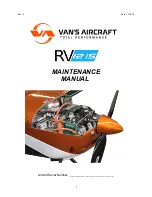
CUMEO
Examples:
> To avoid large changes in the angle of attack, release the brakes when flying into strong
updrafts and pull them when flying into downdrafts.
> When flying in turbulent air, if you feel a drop in pressure in parts of your glider, pull
the brake briefly and progressively until the pressure becomes normal again.
If you brake the wing too quickly and too far, you risk stalling it!
ACCELERATED FLYING
The speed bar should be secured to the harness prior to launch.
To use the acceleration-system you will need to make some effort. This can affect the
sitting position in the harness. Therefore we recommend an upright position in the har-
ness. Adjust the harness before your first attempt of accelerated flight.
We remind you to only fly in wind conditions that don’t require constant use of the
acceleration-system.
To reach the maximum speed press the acceleration-system firmly until both pulleys on
the A-risers touch each other. As soon as you apply the acceleration-system the angle of
attack will be reduced, the speed increases, but the paraglider becomes less stable and
can collapse more easily. Therefore always use the acceleration-system with adequate al-
titude from the ground, obstacles and other aircraft.
Avoid adjusting the speed bar too short. It is important to avoid unintentionally accelerat-
ing the glider due to a setting that is too short. Accelerated collapses are normally more
impulsive and demand fast reactions.
CAUTION
NEVER ACCELERATE IN TURBULENT AIR!
NEVER ACCELERATE NEAR THE GROUND!
NEVER LET GO THE BRAKE HANDLES!
NEVER BRAKE THE GLIDER SYMETRICALLY WHILE FLYING ACCELERATED!
LANDING
The skywalk CUMEO can be landed easily. Make your final approach against the wind and
let the glider slow down at its own rate. Further reduce the speed by applying the brakes
lightly and evenly. At about 3m above the ground you increase the angle of attack by slow-
ing down more and eventually completely flare out the glider.
When you have reached the minimal speed apply full brake. In strong head winds, slow
down carefully. When you have reached the ground safely, stall the glider warily.
Avoid turning sharply before your final approach. This increases the danger of pendu-
lum effect!
TURNING
The skywalk CUMEO is very manoeuvrable and reacts to steering inputs directly and with-
out delay. Simple weight shift enables you to fly very flat turns with minimal altitude loss.
Combined steering technique: Weight shifting and pulling of the inside brake line allow ex-
tra tight turns. During turning you can control the speed, the curve radius and banking by
additional use of the outer brake. Counter braking or releasing the brake lines can change
these parameters most effectively.
CAUTION
PULLING THE BRAKE LINES TOO FAR AND TOO FAST CAN CAUSE A STALL!
YOU CAN RECOGNIZE AN IMPENDING NEGATIVE SPIN BY THE HIGH CONTROL
LINE PRESSURE AND SLIGHT BACKWARDS FOLDING OF THE WING TIP.
IF THIS HAPPENS, RELEASE THE INSIDE BRAKE IMMEDIATELY.
EMERGENCY STEERING
Should a brake line break or a brake handle become detached, you can still steer and land
the glider with limited control using the C-risers.
ACTIVE FLYING
Active flying means flying in harmony with your paraglider. That means that instead of
flying with the brakes always in the same position, you are aware of the slightest distur-
bances in the air and react accordingly, especially in turbulent thermals.
Never let go of the brake handles, especially in turbulent conditions!
Despite your glider’s high stability, you should constantly use brakes and weight shif to
correct the position of the canopy in turbulence. With a light tug on the brakes you can
constantly keep in contact with the canopy and feel its internal pressure. That way you
can recognize and react early to a pressure drop and impending collapse. Accelerated col-
lapses in general tend to be more impulsive and require increased attention on the part
of the pilot. As you gain experience, these reactions will become instinctive.
The skywalk CUMEO rarely collapses even without a pilot reaction. However, maintaining
an active flying style will greatly increase your margin of safety.
Flight Techniques and Characteristics
43
42
Flight Techniques and Characteristics
EN


































